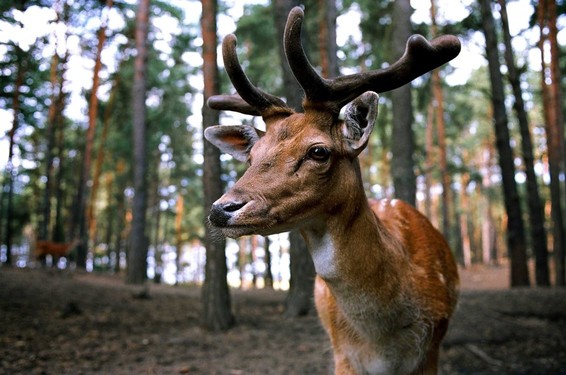

Cruising to enjoy autumn's colors? Be on the lookout for deer. Insurance claims for animal collisions rise dramatically in the fall when deer are mating. A recent study by State Farm Insurance underscores the danger in certain states, including Pennsylvania, showing that its claims are up 21 percent over the last five years, even though the miles driven by motorists are up by only 2 percent.
Whether you're heading out for the hunt or just passing through a deer-populated area, there are a few safe driving tips to keep in mind as deer season gets into full swing:
1. Always Wear Your Seatbelt
A seat belt is your best defense for minimizing your risk of injury in a crash. An Insurance Institute for Highway Safety study found that 60 percent of the people killed in animal-vehicle collisions weren't wearing seat belts.
2. Be Aware of Your Surroundings
According to the National Science Foundation, there are nearly 1.5 million motor vehicle crashes involving deer in the United States each year. These crashes tend spike from October to December, when deer activity rises. To avoid becoming part of this statistic, pay close attention to what's around you, especially when driving through the woods or in rural areas. Whenever you spot those yellow deer crossing signs, slow down and keep your eyes on the sides of the road, since these often signal areas with a history of deer-related crashes.
3. Assume They Have Friends
Where there's one, there's usually more. Deer often travel in groups, so if you see one run across the road, expect others to follow.
4. Check the Clock
Deer tend to be most active during dawn and dusk. Since road visibility can be low during these times, turn on your high-beam headlights to get a better view--just make sure you tone them down when oncoming traffic approaches.
5. Brake, Don't Swerve
If a deer enters the road, slow down (or stop) and do your best not to swerve--you don't want to cause an accident while trying to avoid another. Also, be sure to leave plenty of space between you and the cars around you, in case you need to brake quickly. Your odds of surviving an accident are better when hitting an animal rather than hitting another car.
6. Have an Accident Action Plan
Like all animals, deer are unpredictable. While you can take many steps to improve your safety, you can't defend yourself against every possible scenario. If you do hit a deer, see if anyone is injured and call the local police and/or medical services. Do not attempt to touch a deer that's in or near the road. Since there's likely to be damage to your vehicle, make sure you also contact your insurance agent to report the accident.
Though safe driving is important at all times, these few extra steps can help get you through hunting season accident-free. If you or someone you care about has been injured as the result of a car accident, the team at Dugan & Associates is here for you, and we're ready to look at your case. Contact us for a consultation.
"*" indicates required fields